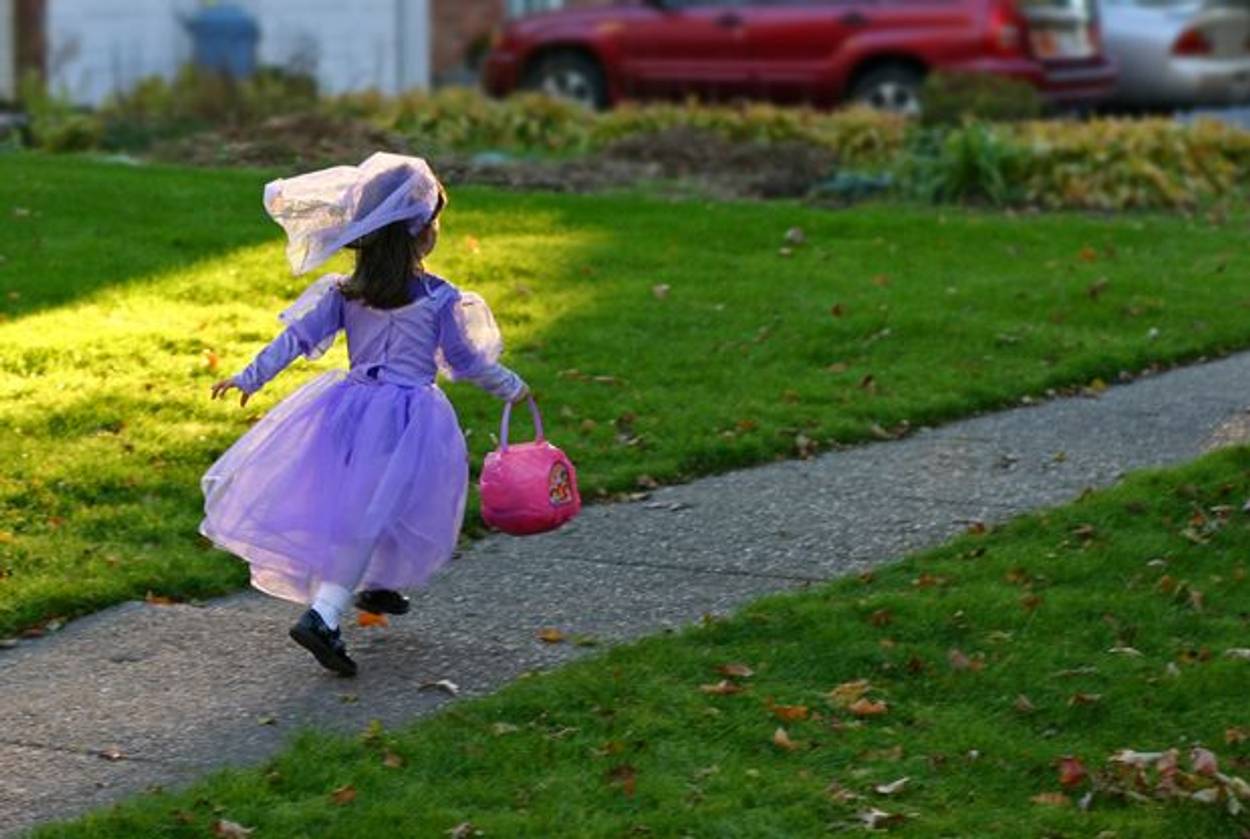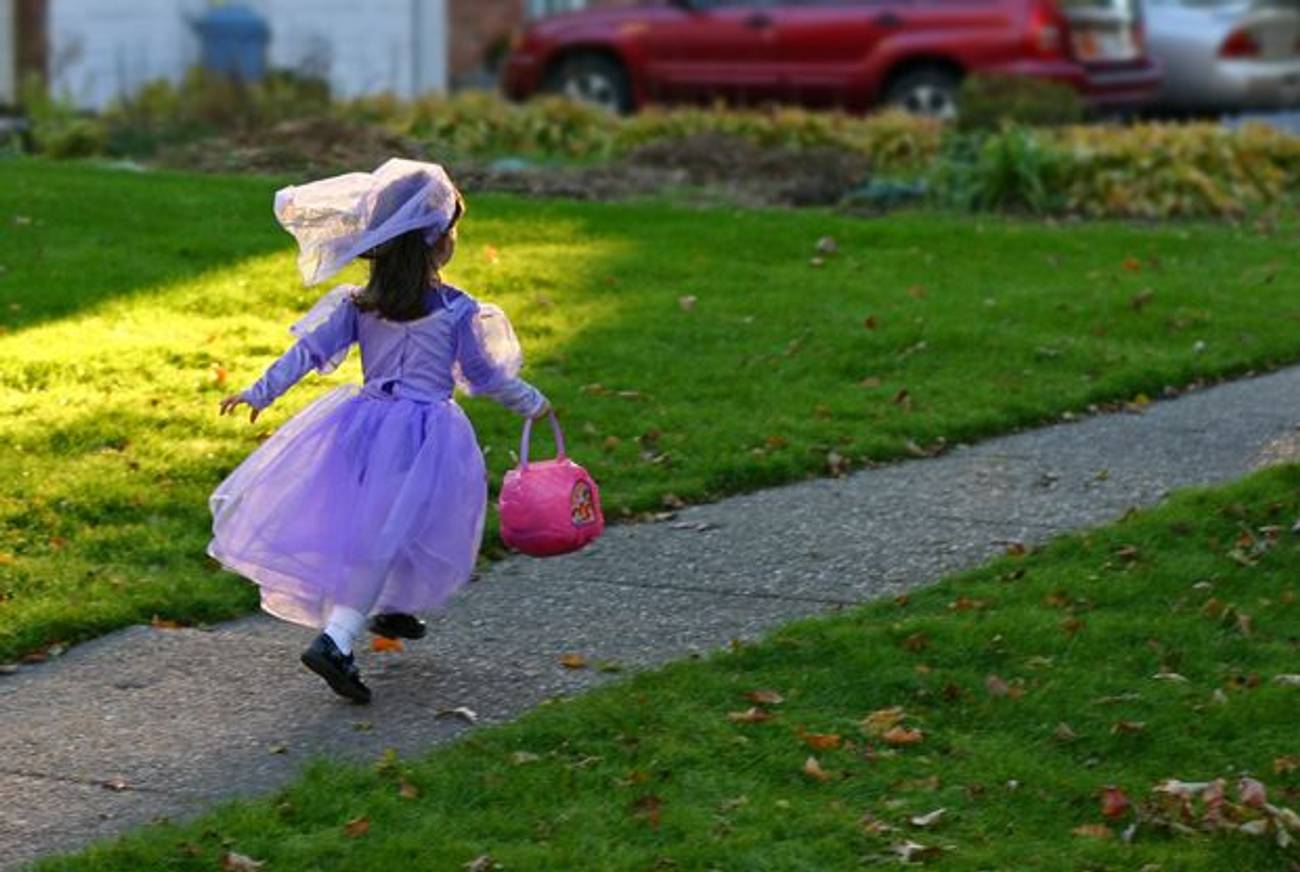Purim is More Than Just ‘Jewish Halloween’
Why the common comparison sells the Jewish holiday short




This past Halloween, a non-Jewish acquaintance at the gym asked me what my children would be dressing up as when they went trick-or-treating. As Orthodox Jews, I explained to her, we don’t celebrate Halloween. The next thing out of my mouth surprised me.
“We have a holiday in the spring called Purim where the kids dress up in costumes and receive candy and other gifts.”
I knew Purim had absolutely no similarities to Halloween beyond the costume tradition, but I felt obligated to appease my gym friend. I wanted her to know that my kids weren’t deprived of the joy and art of costumes and treats.
“They knock on people’s doors asking for candy?” she asked, trying to disguise her shock. “In the spring?”
I guess she pictured kids in costumes ringing doorbells, bags held out expectantly, seeking Twizzlers and Tootsie Rolls on a perfectly random April evening.
“No, they just go to visit friends and family,” I replied. She looked relieved, but there was a noticeable air of tension between us.
As someone who grew up Reform, celebrating both Halloween and Purim—albeit Purim to a lesser extent than I do now—I once considered Halloween to be the superior of the two holidays. In my adolescent world, it was an annual highlight, never mind that I knew nothing of the meaning behind the tradition. It was a chance to dress up and be creative. There was the Halloween I put on black tights and a black garbage bag over my head and said I was a California Raisin. There was the year I was a mini Pat Benatar, and the year I was borderline too old to trick-or-treat so I dressed up as a baby, complete with a pacifier and giant cloth diaper.
Though Halloween, too, is rooted in a spiritual concept, the multi-billion dollar cultural monster we know it as today seems more rooted in commercialism than anything else. Still, having grown up in the South with very few Jewish friends, celebrating Purim with the 15 other kids in my Sunday school class always paled in comparison. While I do have fond memories of the costume parade, where every girl was either Queen Esther or Vashti, and the haimishe Megillah readings, a few hamantashen (usually filled with prune paste) didn’t compare to a sack full of Twix bars and Sugar Babies.
The Purim I celebrate now is very different. There are weeks of preparation involved, and an intangible excitement that stays with me long after the holiday ends. My family lives in a large observant Jewish community, where during Purim the streets are filled with people dressed in costume, delivering lavish gift baskets full of candy and baked goods and collecting tzedakah for schools and organizations. Our dining room table is quickly covered with sweets and baked goods from friends, which I now know to hide most of so my kids (and husband) don’t wind up with stomach aches.
The full day of festivities includes a lively Megillah reading and ends with a celebratory meal with family and friends. Adult beverages are consumed, and the mood is merry. It’s a rich celebration far more intricate than I could have imagined.
I couldn’t figure out why the Halloween conversation with the woman at the gym left me feeling like I had picked up something heavy that I couldn’t set down. I wanted to tell her how much care and detail went into planning for the holiday of Purim, from the assembly and delivery of dozens of gift baskets to preparing the festive meal, to dropping everything in order to hear the Megillah. And more important, I wanted her to know the historical and spiritual meaning behind the holiday, how it’s about one woman giving up everything and risking her life for her people. I felt like I didn’t do the holiday justice by comparing it to Halloween.
So a few weeks later, back at the gym, I approached the same lady as she stepped off the treadmill and mopped her neck with a towel.
“This might sound a little weird,” I said, “but remember when I was telling you about that Jewish holiday with the costumes a few weeks ago?”
She clenched her brow and nodded.
“Well, I didn’t want you to think it was just the Jewish equivalent of Halloween. It’s actually based on a historical event where a king’s evil advisor wanted to wipe out the Jews, but his queen, who was secretly Jewish, fasted and prayed and saved her people from harm. That’s the nutshell version,” I said, with a nervous laugh.
She asked know what the costume connection was. I explained how God remained “hidden” during the miracles of the Purim story, and so we “hide” ourselves as well when we celebrate. Then I went into the tradition of mishloach manot, as well as the mitzvah of hearing the Megillah and giving to the poor.
She thanked me and we parted ways. Then I realized the strange sense of closure I felt. My sudden need to clarify the holiday had nothing to do with my sweaty acquaintance. It was I who needed to sort out the Purim of my past and the Purim of my present in my head. They were clearly different—so different, in fact, that speaking about them in the same breath awakened something in me.
Growing up, neither Halloween nor Purim held any particular meaning for me. They were both just enjoyable rituals that I was expected to participate in, and that was fine. But as an adult, I like that Purim is both physically enjoyable and spiritually enriching. My children learn about the mitzvahs of Megillah and giving to the poor—and even the fun parts like dressing up and eating junk are elevated to a spiritual level.
I’m glad my conversation with the woman at the gym pushed me to reflect on my changing relationship with the two holidays. I’m sure I’ll see her back there after the holiday, when I’ll have eaten myself into a sugar-induced stupor.
Leah Damski holds an MFA in Creative Writing from Columbia University and has completed a novel and short story collection. Follow her on Twitter @leahdamski.